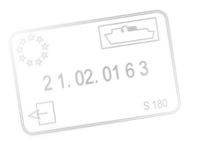I was born in 1946 in BK. My parents are Holocaust survivors who went to the Nyíregyháza ghetto, then were taken to Aushwitz and then from there to Treisienstadt where they were liberated. They met after they were liberated. They went back to Hungary (my mother's family is from BK; my father's family from another area of Hungary) after the war. In its prime, the Jewish population was about 100 families. My great grandfather Cheskel (Joseph) Taub came to Bodrogkeresztúr in the 1800s, myself, my mother Edith (Ester) Friedman, and grandmother Sara Friedman (maiden name Taub) were born in Keresztúr. Most of the Jewish families were taken to Aushwitz. A few were hidden. About 25 to 40 came back, mostly the younger people. From the whole town two women came home who were about 40 years old.
When I was growing up, BK was a small country town where there was no plumbing and my great grandfather Cheskel Taub was one of the first to get electricity. I remember using outhouses. My father Jeno (Eliahu) Klein had a motorcycle, but most people got around on horses and with horses and buggies. Roads were made of cobblestone. The major industry was the rock quarry, but there were grapes grown and wine made nearby. There was also wheat grown in BK. BK had one main road, lots of horses and cows. There was only an elementary school, which went up to eighth grade -- no high school or college. It was a mountainous region with a really nice river.
In its prime, there were about 100 Jewish families in BK and one synagogue.
In 1952, Russia invaded, bringing Communism, which made it difficult to practice religion. My father had to give up the quarry because no one could own property. In 1956, Hungarians staged an unsuccessful revolution. Many people left during that time, including my parents and family. They got a passport to Israel, where an aunt lived. But another aunt in the U.S. said life was too difficult in Israel at the time and they should come to the U.S. To do that, we had to live in Vienna, Austria for two years, then take a boat to the U.S. We came here when I was 12 years old, in 1959. I was one of six children. I have lived in Brooklyn since then.
I’ve been back a couple of times, in 1994 and six years ago. The roads have been improved, there is a train station at the edge of town and there are more cars and TVs. But there are still lots of cows and horses and it's still very small. The synagogue is now used for storage and there are no Jews there. Reb Shayele’s house is a bit of a tourist attraction, especially during his yahrtzeit, and they have installed a bathroom, etc. for tourists' comfort. Lots of people visit in May.
The more affluent people or those seeking education have moved to the cities, so lots of the people there are poor or older. I believe the quarry is still in use.










